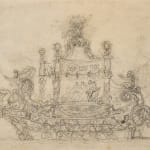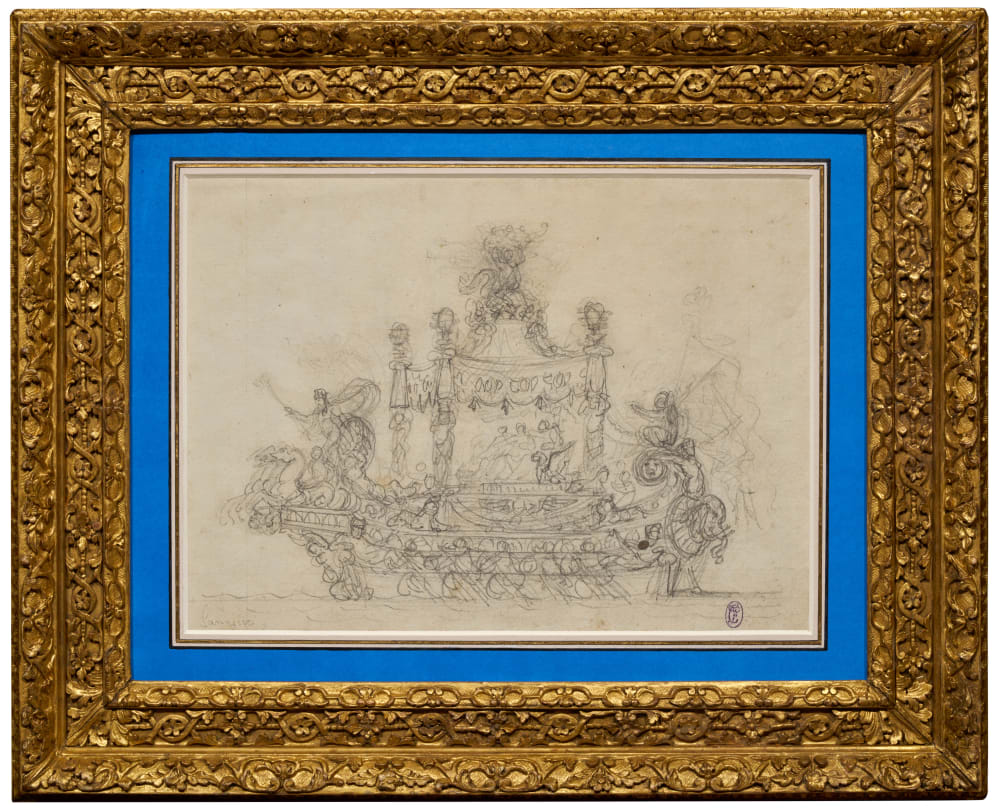 Alessandro Mauro - Festival Gondola (1976.343) - Metropolitan Museum - New York - USA
Alessandro Mauro - Festival Gondola (1976.343) - Metropolitan Museum - New York - USA
 Alessandro Mauro - Festival Gondola - detail (1976.343) - Metropolitan Museum - New York - USA
Alessandro Mauro - Festival Gondola - detail (1976.343) - Metropolitan Museum - New York - USA
 Marieschi - Regatta on the Grand Canal between the Foscari and Balbi palaces. 1741 - British Museum - London
Marieschi - Regatta on the Grand Canal between the Foscari and Balbi palaces. 1741 - British Museum - London
 Marieschi - Regatta on the Grand Canal between the Foscari and Balbi palaces (detail). 1741 - British Museum - London
Marieschi - Regatta on the Grand Canal between the Foscari and Balbi palaces (detail). 1741 - British Museum - London
Alessandro Mauro
22.5 x 31 cm
Further images
-
(View a larger image of thumbnail 1
)

-
(View a larger image of thumbnail 2
)

-
(View a larger image of thumbnail 3
)

-
(View a larger image of thumbnail 4
)

-
(View a larger image of thumbnail 5
)

-
(View a larger image of thumbnail 6
)

-
(View a larger image of thumbnail 7
)

-
(View a larger image of thumbnail 8
)

-
(View a larger image of thumbnail 9
)

-
(View a larger image of thumbnail 10
)

-
(View a larger image of thumbnail 11
)

Provenance
Cesare Frigerio (1890 - 1977?) - his mark lower right (Lugt 4363)
This stunning Baroque study depicts a regatta boat, a type of vessel developed in eighteenth-century Venice for the regattas organized by the Serenissima during visits by royalty and princes. We propose to link this drawing to the work of Alessandro Mauro, an artist who specialized in this type of composition, as illustrated by a drawing from him at the Metropolitan Museum.
1. Description of the boat
The greatest decorative fantasy reigns in this preparatory study, which blends mythological and exotic elements with references to ancient Egypt. Our drawing is probably an initial thought, destined to be refined and clarified later in pen and ink (as evidenced by the ink stain in the lower right). A quadriga of seahorses guided by Neptune stands at the stern of the boat, shown well above the waterline (perhaps to outline its empty volume). One of the seahorses is ridden by a newt, while Amphitrite lies at the feet of the sea god.
The center of the boat is occupied by a vast baldachin resting on four atlantes and surmounted by a figure riding an animal (a dragon?). Three figures sit beneath the canopy, one of them on a griffin-shaped seat. This allusion to Egyptian antiquity echoes the winged sun (sometimes a symbol of the god Horus, as in the temple of Edfu in Egypt) that adorns the sides of the promontory on which this baldachin rests.
Another flag-bearer figure crouches at the stern of the boat on a raised seat, on the reverse of which is a crowned mermaid whose arm, extended backwards, rests on a mascaron decorated with a radiant face (Helios?) and whose torso surmounts an elephant's head. The heads of the rowers and their oars are sketched all along the boat, whose sides are embellished with elongated naiads.
2. The Venetian regatta boats
An exhibition held in 2013 at the Ca' Rezzonico (the Venetian eighteenth-century museum) paid tribute to these regatta boats through studies and prints depicting them. The regattas organized by the Serenissima in honor of visiting princes and sovereigns were among the most spectacular ceremonies in Venice. Some important artists of the 18th century contributed to the creation of these extravagant boats which were given exotic names such as bissona, malgarota or peota.
The specialists in this field were Andrea Urbani and the brothers Alessandro and Romualdo Mauro. They were born into a family of theater decorators in Piedmont, but little is known about their detailed biography. Alessandro was the architect of the Dresden opera house and of the St. Samuel Theater in Venice (in collaboration with his brother Romualdo), but also worked as stagehand and set designer in Vienna, Rome and Turin. A drawing produced around 1737 from the Metropolitan Museum bears witness to his activity as a regatta boat designer.
This drawing is a much more elaborate version than the one presented here, having been entirely reworked in brown ink. However, a figure at the bow of the boat, executed solely in black chalk, still bears witness to a technique similar to that of our drawing.
It is difficult to know whether the boat depicted in our drawing was a project for an actual boat or whether it remained in the planning stage, but the front of our boat (Neptune and the quadriga of seahorses ridden by a newt) bears several similarities to that of a parade boat depicted in the print published by Michele Marieschi entitled Regatta on the Grand Canal, between the Foscari and Balbi Palaces. This print is dated 1741, which could confirm that our work dates from around 1740.
The area between Neptune and the quadriga that precedes him on this strange paddle-boat appears to be partially submerged, confirming that the waterline of our boat was probably intended to be much lower than the one shown in our drawing.
The Correr Museum’s collection holds one of the most important collection of engravings and drawings devoted to these specifically Venetian Baroque productions. These boats were intended to last the duration of a festival. Today, they are only documented by preparatory drawings or prints that testify to the sumptuousness of their decoration. This taste for regatta boats lasted throughout the Venetian eighteenth century, and the conception of regatta boats also attracted great masters such as Giambattista Tiepolo, Francesco Guardi or Giambattista Piranesi. Freed from functional constraints, the artists' imagination revealed itself in those whimsical inventions blending ornamental motifs, mythological themes and allegorical figures.
It was probably during his stay in Venice between 1743 and 1747 that Giovanni Battista Piranesi (1720 - 1778) realized this drawing for a ceremonial gondola, now at the Morgan Library in New York. Two bissona studies by Francesco Guardi[1] in the Victoria and Albert Museum, London, demonstrate the continuing interest in parade boats in the second half of the eighteenth century.
3. Provenance and framing
The detail presented in the gallery shows the mark of Cesare Frigerio (L. 4363), a Milanese banker whose collection was dispersed after his death in 1977. This detail also allows us to appreciate the carving quality of the Regency frame in which this drawing was framed. It features particularly complex ornamentation based on a set of three friezes composed of floral and vegetal patterns.
[1] Antonio Morassi, in his catalog of Guardi's drawings (Alfieri Electa 1973), mentions six others drawings (less elaborate), all of which are located at the Correr Museum, with the exception of one at Oxford's Ashmolean Museum.







